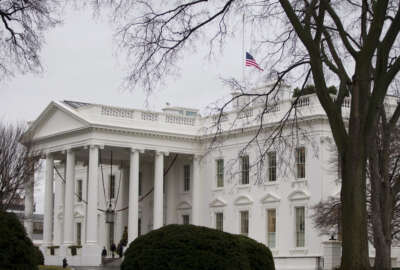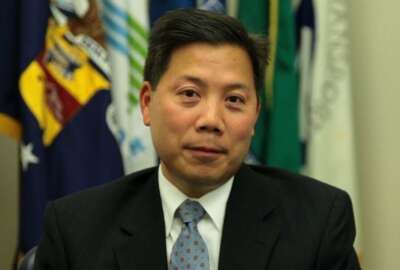
OPM HR guidance, GAO app keep politicos on track
The Office of Personnel Management issued new guidance last month about human resource matters for SESers and outgoing political appointees. GAO plans to develop an...
One of the many moving pieces for agencies preparing for the presidential transition came into place a few weeks ago.
Agencies named the senior career official who will lead the agency after the Obama administration leaves office and the next President’s political appointee takes over. Those names were due to the White House by Sept. 15.
As secretaries, administrators and directors, their deputies and other political appointees resign on Jan. 20, career Senior Executive Service (SES) will take over running their respective departments and agencies.
The naming of the career senior leader is one of several parallel activities happening with less than 40 days before the election and then 73 days until Inauguration Day. The General Services Administration is putting many of these pre-election infrastructure pieces in place.
Tim Horne, the Presidential Transition Team Executive Director at GSA, said his office has focused on the operational priorities over the last six months. He said that means having a venue for the eligible candidates to communicate with government — the Agency Transition Directors Council and the White House Transition Coordinating Council. The councils have had several meetings already this summer with the campaigns.
Horne said during a panel discussion on transition planning sponsored by AFFIRM in Washington, D.C., that one rule of thumb is if either campaign has a question, his office can facilitate the answer across the government and then share the answers with both candidates.
Along with GSA’s office, other agencies are helping prepare agencies for the transition. The Office of Personnel Management issued new guidance last month about human resource matters.
The guidance includes sections on seeking work outside the federal government, contacts with lobbyists and post-employment restrictions. It also addresses positions that could be changed from career to political and vice versa, and the role of SESers during a transition, such as the requirement for agencies to suspend new SES appointments when the secretary leaves office.
The 88-page guidance also answers common questions for existing political appointees around items like accrued sick and vacation leave — they will receive a lump-sum payment — or if they are eligible for unemployment — no they are not — or what happens to their health insurance — they can keep it for 31 days at no cost and then have the option to pay for the all the cost of the plan for the next 18 months.
In addition to federally led efforts, the Partnership for Public Service has been active in helping bring together the transition teams. Tina Sung, the vice president for Government Transformation at the partnership, said her organization is working with the candidates to develop a management agenda so they have concepts and ideas they are ready to work on as soon as the election is over.
Sung said the partnership also is bringing back people who’ve been through multiple transitions to talk to the candidate’s landing team and incoming appointees. Additionally, the partnership is developing a course for SESers called ready to act to step into political positions.
While many of these efforts are focused on federal employees and out-going political appointees, the Government Accountability Office plans on giving new administration officials as well as members of Congress help in understanding the ongoing challenges each agency faces.
Bill Reinsberg, an associate director of strategic issues at GAO, said the agency is developing a new app for lawmakers and new agency leaders to help distill into understandable chunks the more than 1,000 annual reports, of which 85 percent include recommendations.
“What are the top risks? What are the best ways to save money and make the government more efficient? We have recommendations that address all of those things. The important thing is to focus on those that have the greatest impact. Of course, all recommendations are important, but if we can have the greatest impact quickly, that’s the goal,” Reinsberg said. “The app will allow people to search either on an issue or an agency and identify the recommendations the GAO has identified as the top priority in terms of that.”
He said GAO will define the focus areas broadly so people can search for recommendations on topics such as IT or technology, improper payments, natural resources, federal management issues and so on.
“The status of the recommendations will be updated so it will be useful immediately as people come in and take office,” Reinsberg said. “Then it will be useful later on as progress is made in implementing the recommendations and new ones are made so we will update this periodically.”
GAO decided to develop the app in order to better meet their customers where they are: on mobile devices.
Reinsberg said GAO plans to launch the app two days after the election.
Along with the app, GAO is offering several other resources. Reinsberg said GAO will develop a management agenda to address top issues for the new administration, such as interagency collaboration, better management of IT and acquisition operations and other related issues.
“We will be updating our High-Risk List, which is 32 areas that are at risk of waste, fraud or abuse, or mismanagement or need to transform. We will be updating that in late January or February,” he said. “For the transition, we will continue our key issues. That’s a set of about 100 issues where we have very brief, about one-page of information available electronically that would give somebody an overview of a management or operational issue in government, plus links to all the resources that underlie that.”
The Office of Management and Budget is doing something similar too. OMB wants to make sure agencies develop standardized briefing books and federal Chief Information Officer Tony Scott is developing a State of Federal IT report that brings together every cabinet level agency’s own report on the challenges and opportunities around technology.
All of these efforts are more focused and standardized the first time because of the Presidential Transition Act that became law last year. GSA’s Horne said a playbook or standard operating procedure never existed before, other than talking to others who have gone through the transition.
Horne said he hopes to capture all of this information and effort so in April 2020, the next set of people doing this work can have a sense of what was done in 2016, what worked and what didn’t.
Copyright © 2025 Federal News Network. All rights reserved. This website is not intended for users located within the European Economic Area.
Jason Miller is executive editor of Federal News Network and directs news coverage on the people, policy and programs of the federal government.
Follow @jmillerWFED
Related Stories






